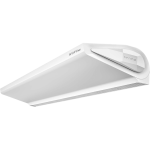Understanding the complex and fascinating ecosystems of the world’s oceans is crucial for sustainable management of marine resources. From ancient times when humans first ventured into the depths with rudimentary tools, to the modern era of deep-sea exploration powered by advanced sensors and AI, the journey reflects a profound evolution in how we perceive and harness marine light—both natural and bioluminescent. At the heart of this transformation lies the science of deep-sea light, a discipline that reveals how photon scarcity shapes life and, increasingly, how it inspires revolutionary fishing innovations.
The Photobiological Foundations of Deep-Sea Light Environments
Below 1,000 meters, sunlight vanishes rapidly, leaving only a faint glow and fleeting bioluminescent flashes. Spectral composition shifts dramatically: blue and green wavelengths dominate due to water’s optical properties, with attenuation rates exceeding 90% per 100 meters. This extreme light attenuation drives profound biological adaptations—species evolve enhanced photon sensitivity, specialized retinal structures, and often rely on bioluminescence not just for communication, but as a primary sensory tool. For example, the lanternfish (Myctophidae), one of the most abundant deep-sea organisms, uses its bioluminescent organs to detect prey silhouettes against the dim background, turning light into prey.
Evolutionary Adaptations to Photon Scarcity
Over millions of years, deep-sea life has mastered survival in near-darkness. Many species exhibit extreme morphological adaptations: enlarged eyes with high rod density, transparent or reflective tissues that amplify residual light, and specialized photoreceptors tuned to specific wavelengths emitted by bioluminescent organisms. Other species, like the anglerfish, produce their own light through symbiotic bacteria to lure prey—a perfect example of bioengineering light in a photon-starved world. These evolutionary innovations reveal a hidden visual ecology where light functions not only as illumination but as a currency of survival.
Light as a Catalyst for Deep-Sea Fisheries Innovation
The unique photobiological landscape of the deep ocean is no longer just a scientific curiosity—it is a catalyst for cutting-edge fishing technologies. By decoding how deep-sea species detect and respond to light, engineers design selective gear that exploits bioluminescent cues, reducing bycatch and enhancing species targeting. For instance, LED arrays tuned to specific emission spectra can mimic natural prey signals, luring target fish while repelling others. This selective attraction increases efficiency and supports sustainable harvesting.
Bioluminescent Cues in Selective Fishing Gear Design
Recent prototypes integrate photodetectors and programmable LEDs into trawl nets, enabling real-time adjustment based on bioluminescent feedback. In controlled trials, gear equipped with blue-green light emitters reduced bycatch by up to 40% compared to conventional nets, demonstrating light’s dual role as both a sensory signal and a management tool. These innovations reflect a shift from brute-force capture to intelligent, light-guided interaction.
Sensor Technologies Mimicking Deep-Sea Vision
Translating deep-sea visual ecology into practical tools, researchers are developing sensors that replicate the sensitivity and spectral tuning of deep-sea eyes. These include low-light CMOS sensors and adaptive imaging systems capable of distinguishing bioluminescent patterns from background noise—capabilities crucial for real-time species identification and behavioral tracking. Such sensors not only improve monitoring but also inform predictive models of fish movement.
Energy-Efficient LED Systems Inspired by Natural Patterns
Natural deep-sea bioluminescence operates with extraordinary efficiency—often using chemical reactions that emit light with minimal heat. This principle inspires sustainable LED designs optimized for low power consumption and precise spectral output. By mimicking the pulsing rhythms and directional emission of biological light, these systems reduce energy use while enhancing detection accuracy, aligning technological progress with ecological principles.
From Light Patterns to Predictive Catch Optimization
Beyond detection, deep-sea light ecology provides a foundation for forecasting fish behavior. By mapping light signatures across time and depth, AI models analyze bioluminescent activity to predict migratory patterns of key species. These forecasts enable dynamic quota management, allowing fisheries to adjust operations in real time, minimizing overexploitation and aligning harvests with natural cycles.
Integrating Photobiology with AI-Driven Fishing Models
Machine learning algorithms trained on deep-sea light data reveal hidden correlations between bioluminescent behavior and environmental conditions. For example, sudden flashes may signal feeding aggregations or spawning events. When embedded in fishing operations, these insights guide vessel routing and gear deployment, transforming raw light patterns into actionable intelligence that boosts catch efficiency and sustainability.
Bridging Exploration and Innovation Through Deep-Sea Photonics
The synergy between deep-sea light ecology and fishing technology exemplifies a new frontier: using scientific discovery to inform practical innovation. Lessons from bioluminescent predator-prey dynamics and photon-limited vision are now embedded in next-gen submersible sensors and autonomous monitoring systems. This cross-pollination fosters a feedback loop where exploration drives sustainable resource use, and real-world data enriches ecological understanding.
Collaborative Innovation Between Scientists and Fishers
Close collaboration between marine biologists and fishing technology developers is essential. Joint ventures have led to field-deployable bioluminescence monitors and adaptive LED systems tested in real fishing environments. These partnerships ensure that innovations remain grounded in ecological reality, avoiding unintended impacts on deep-sea communities.
Reinforcing the Legacy of Deep-Sea Exploration in Fishing Science
The parent theme—The Science of Deep-Sea Exploration and Modern Fishing Innovations—serves as a living bridge between discovery and application. By transforming raw oceanic data into actionable insights, this knowledge transforms abstract science into tools that guide responsible fisheries. Light, once merely a silent force in the abyss, now illuminates a path toward sustainable harvesting, where every flash of bioluminescence contributes to smarter, greener ocean stewardship.
“Light in the deep is not just seen—it is understood. Its patterns, subtle and ancient, teach us how to fish with foresight, not force.”
| Application | Technology / Insight |
|---|---|
| Reduced bycatch | LED cues mimicking bioluminescent prey |
| Real-time species detection | Bioluminescent signature mapping via AI sensors |
| Energy-efficient gear | Natural light emission patterns inspiring low-power LEDs |
| Sustainable quota management | Predictive models using light-based migration forecasts |
This journey from deep-sea darkness to illuminated innovation underscores a vital truth: the future of fishing lies not in dominating the ocean, but in listening to its quiet light.
Return to the parent article: The Science of Deep-Sea Exploration and Modern Fishing Innovations



 AC серия
AC серия
 Электрические тепловые завесы Wing White Белые
Электрические тепловые завесы Wing White Белые Водяные тепловые завесы WING White Белые
Водяные тепловые завесы WING White Белые Тепловые завесы Wing Dark Черные
Тепловые завесы Wing Dark Черные Wing PRO тепловые завесы
Wing PRO тепловые завесы